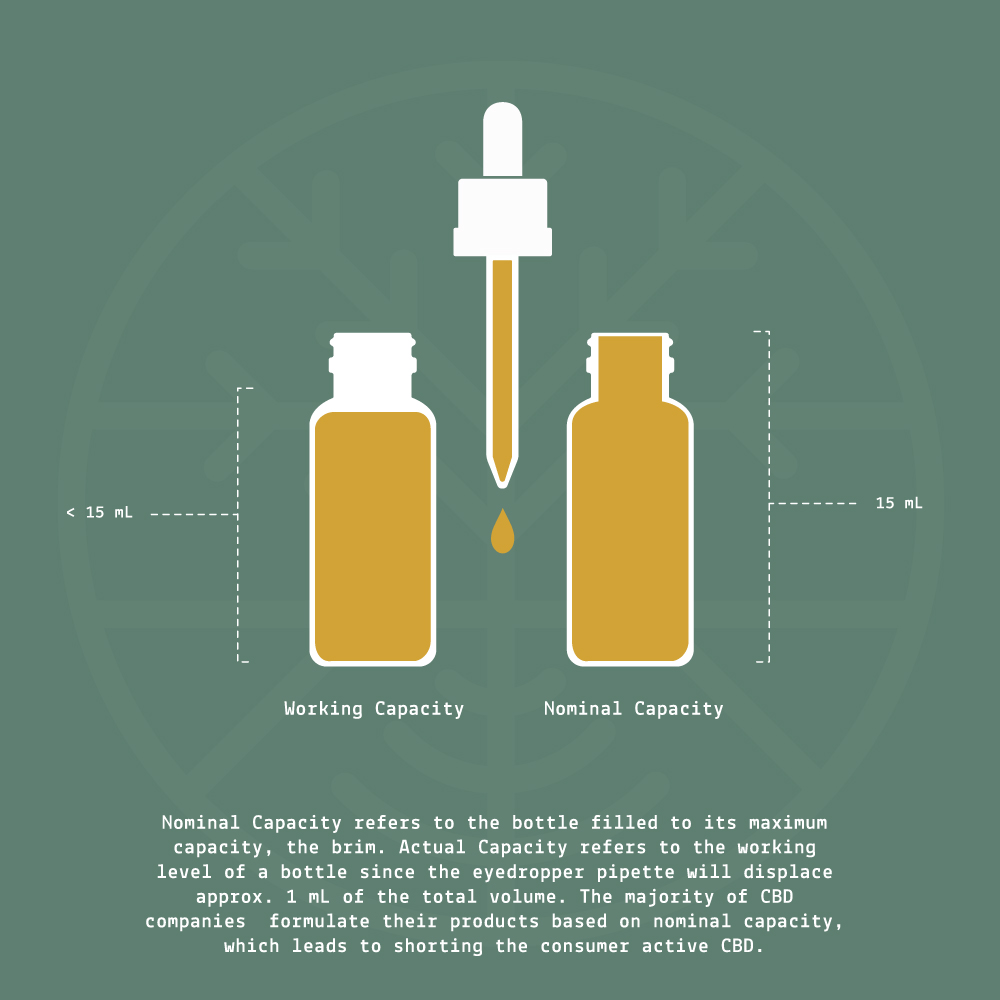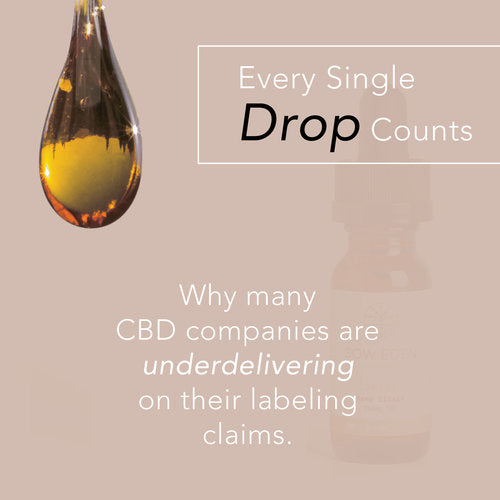If you’ve purchased CBD products from another company in the past, chances are very high that the CBD content advertised on the label was inaccurate. In fact, a recent survey of CBD products sold online showed that over two-thirds were labeled incorrectly. Many of the samples had less CBD than advertised on the label, many had more, and some even had illegal levels of THC. This post will focus on why many CBD products, especially tinctures, contain less CBD than advertised on the box or label.
One of the biggest errors made by other CBD companies is formulating their product based on the nominal capacity of their bottle.

SO WHAT IS “NOMINAL CAPACITY?”
Nominal capacity refers to the volume of the bottle as it is marketed and sold by a bottle manufacturer. For example, bottles are sold and marketed as 15 mL (0.5 fl oz), 30 mL (1 fl oz), 60 mL (2 fl oz), and so forth. However, here’s the catch — a 15 mL bottle doesn’t actually hold exactly 15 mL! Try filling a 15 mL bottle to the brim - it’s nominal capacity - and capping it with an eyedropper pipette closure. You will quickly find out that the pipette displaces the volume of the bottle and now you’ve made a mess! The brimming tincture liquid will come cascading over the neck and down the sides of the bottle.
“WORKING CAPACITY:” THE TRUE MEASUREMENT
The actual capacity of a bottle, otherwise known as “working capacity,” refers to the amount of liquid that
can reasonably fit in a bottle without overflowing and making a mess. For example, a 15 mL bottle’s working capacity is about 14 - 14.3 mL. This discrepancy in nominal capacity vs actual capacity is what causes the biggest error in CBD calculation.
Let’s use an example:
Bottle Size (Nominal Capacity): 15 mL | Total CBD: 500 mg | CBD per mL (Nominal): 33.3 mg
So theoretically speaking, a company advertising 500 mg total active CBD (per 15 mL bottle) will have 33.3 mg CBD per mL. But did they take into consideration the loss of volume from the pipette? In other words, although their product may test at 33.3 mg CBD per mL and have a Certificate of Analysis to substantiate their marketing claim, the truth of the matter is that there are not 15 mL in their bottle! By the way, we’ll let you in on a dirty little secret: Most CBD testing labs don’t take nominal vs working capacity into account either. These labs generally base their formulas for calculating total cannabinoid content on the manufacturer’s label(!!!). So now you can see why this data is skewed. The unit size for calculating total CBD content should not be 15 mL, it should be the total volume that can ACTUALLY fit - the working capacity - into that 15 mL bottle. Returning to our example above, the total CBD content has now been reduced by 5-6%, bringing it to 470 mg, not 500 mg. Now you, the paying customer, have been shorted around 30 mg total CBD. CBD is expensive and every milligram counts. If you are paying 10 cents per milligram and you are shorted 30 milligrams, that equates to $3.00 of missing active CBD.
* * *
AT SOW EDEN, WE ARE COMMITTED TO BRINGING YOU THE HIGHEST QUALITY CBD PRODUCTS ON THE MARKET. WE ALWAYS POST OUR LAB REPORTS UNDER EACH INDIVIDUAL PRODUCT, AND WE GUARANTEE YOU THE AMOUNT OF CBD ADVERTISED ON OUR LABELS. IN FACT, WE GIVE YOU A LITTLE BIT EXTRA.




